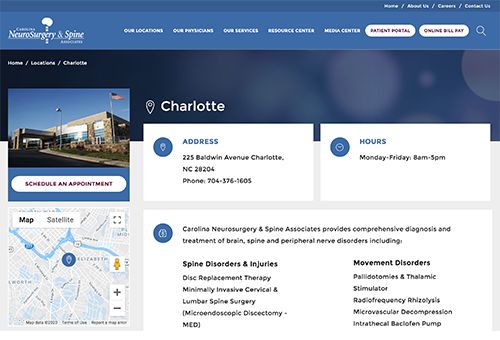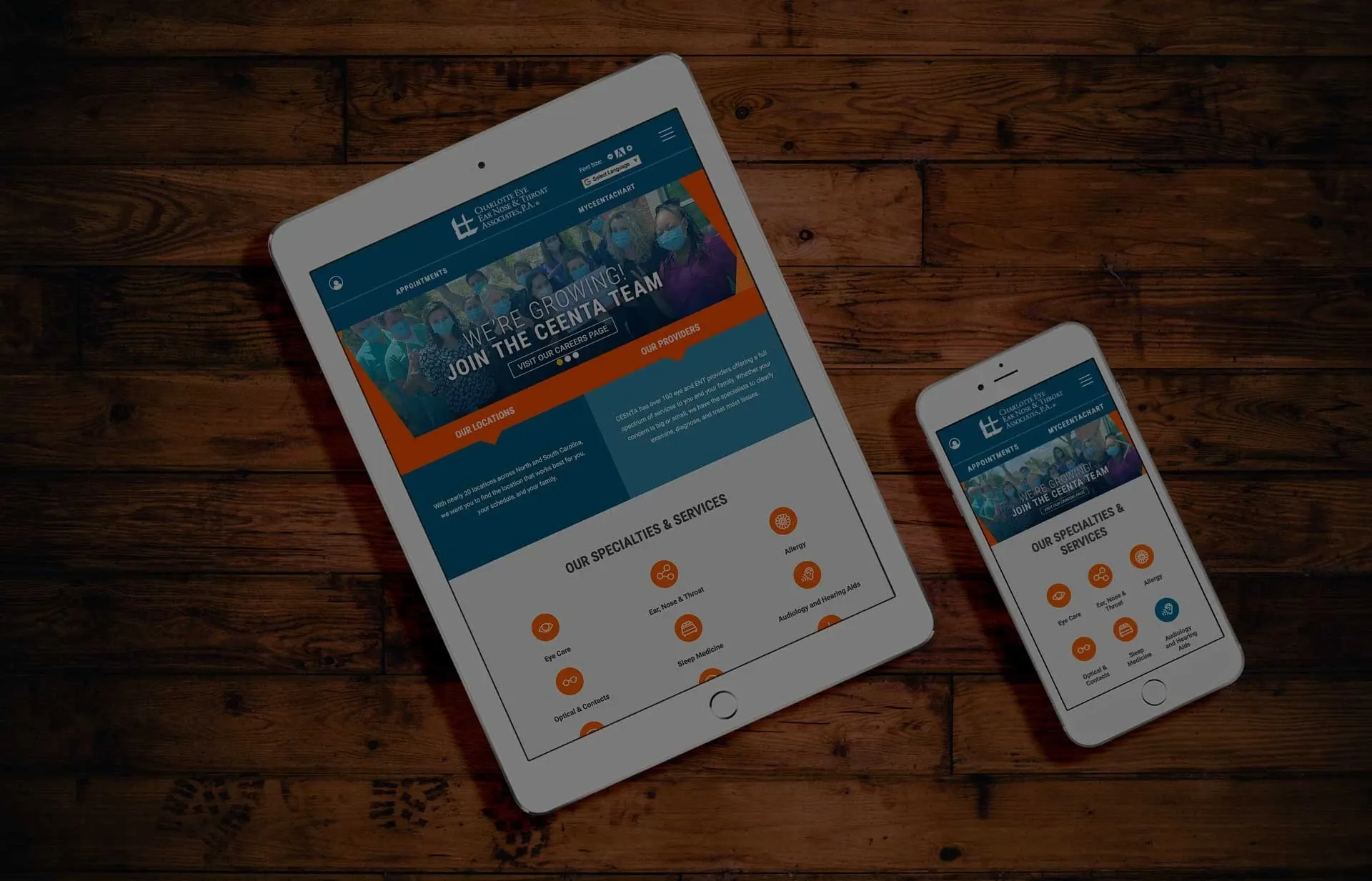Search engine optimization a.k.a SEO is a daunting task. It can be especially overwhelming when optimizing the location page on a healthcare website design. It takes a little more work than optimizing a standard landing page on a website. There are several things that your medical website must have to rank properly in Google. The goal is to consider the information included in the backend of the site for Google to crawl, as well as the information on the front end of the site that will help the patient gather the necessary material.
Back End Optimizing for Medical Website Location Pages
For the back end of the website, the main goal is to optimize your information for Google to crawl. It is important to include all of the information about the location in the proper format so Google can scrape the material and serve it up as a location card in their “location pack” on search results. The data housed in the location pack on Google is called schema. The schema data has a very strict format that needs to be followed in order for it to show properly on Google. To test your schema data, use the Google Structured Data Testing Tool. Be sure to add a canonical tag to your page to ensure that there are no duplicate content issues on the page or other pages. Internal links to other pages on the medical site like doctors’ pages at the practice or the specialties at the practice can help improve the Google rating to keep patients on the page longer. The goal is to reduce the bounce rate of the patients, so Google deems the information knowledgeable and useful.
Lastly, it is important to address the meta title and description of the location page of the medical website. The meta title of the location page should include the brand name, a location keyword (like the city or state) and two or three keywords that explain the medical specialties. For the medical location page, there are a few musts for the meta description. The meta description should include the components of the meta title as well as an additional flare and call to action that will entice the patient to click for more details
Front End Optimizing for Medical Website Location Pages
The patient-facing elements of the website page are what is considered the “front end” of the web page. For the front end of the page, it is important to focus on the user experience for the patient more so than optimizing for Google (though it is still important to think about). First and foremost, include a call to action like “Book An Appointment” as often as possible on the site. Consider putting this information in the header and the footer of your medical website so it is present on each page.
Second, be sure to include all the information a patient would need to get in contact or get to the location. This includes the location address with the Google Maps link, the practice hours, a phone number, and pictures of the outside of the location.
Additional elements to include on the medical location page are testimonials, patient reviews, services available at the location, and the doctors that practice at that specific location. This also ties into including internal links on the page.
The E-dreamz Echo platform makes it easy to manipulate the backend and front end of your medical website. However, our experienced marketing team and developers are versed in working with many other web platforms to optimize the search engine results for any medical website.
Contact our team today to see how we can optimize your medical location page information to increase your Google rank and bring more people to your practice.


« Back to Blog
Ready to Get Started? Contact Us Today to Schedule Your Discovery.

© 2025. All rights reserved. E-dreamz, Inc.

